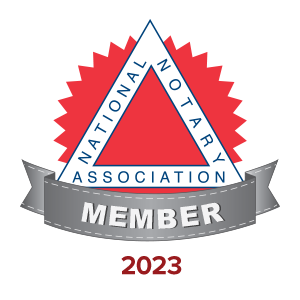If you create software for a new market segment, then Agile is the approach you should take. Naturally, this assumes that your team of developers is capable of working independently and is at ease in a fast-paced environment that lacks a rigid structure. Applying Lean methodology to software development can lead to improved quality, reduced costs, faster delivery times, and increased customer satisfaction.
- LSD is an agile framework that had been laid out by Toyota — the Japanese automotive giant – at the beginning of the 20th century.
- In 2001, a group of agile practitioners came together for a summit in Utah.
- Tests are written before the code is, so an engineer, knowing precisely how features’ conditions will be checked, works out all probable scenarios while developing.
- Processes that create burnout, exhaustion, or fuel disharmony between people or levels of the business are just as problematic, if not more so, than a defective piece of equipment.
The lean methodology can be applied to considerably reduce programming effort, budgeting, and defect rates in software development. Lean thinking has been around for quite a long time, but it’s only recently that Lean has gained popularity in the service industry – in hospitals, banking, and software factories. Today, many software development companies opt for Lean Software Development to manage projects. Adopting lean software development principles often involves significant changes in organizational culture and processes. Resistance to change can be a major hurdle, and it is crucial to communicate the benefits of lean software development clearly and ensure that all team members are on board with the new approach. Lean software development demands customer participation as a best practice.
Lean Software Development (LSD)
By focusing on customer value and delivering incremental updates more frequently, lean software development enables teams to respond more quickly to customer feedback and continuously improve the software. This leads to a better user experience and increased customer satisfaction. The first principle of lean software development focuses on identifying and eliminating waste throughout the development process. This can include anything that does not add value to the final product, such as unnecessary meetings, excessive documentation, or redundant code. Discover the power of lean software development, an innovative methodology that optimizes the development process, improves efficiency, and enhances customer satisfaction. Explore its principles, benefits, and challenges in this comprehensive guide.
More sub-standard code or other defects means more testing and even longer feedback loops from increasingly stretched testers. The Toyota Way says to minimise waste it is important to identify exactly where it most often creeps in. So, before eliminating waste, you need to pinpoint any activities or processes that bring no value to your product and can be skipped. This Lean principle is sometimes called “Respect for People” and is a principle that is often overlooked – at an unfortunate loss. The current level of burnout in software development is currently as high as 80% of developers, influenced in part by COVID-19, but also by overall workload levels. In software development, notably in startups or gaming, burnout is a nearly expected part of the job.
Deliver As Fast As Possible
Lean is focused on eliminating waste, managing processes, and delivering value. These differences also reveal common misconceptions about the potential negatives of adopting agile or lean methods. Lean is a method for reducing waste within your development process — agile is a philosophy that encourages development teams to rapidly deliver software with users in mind.

Scrum teams, for example, are ideally composed of three to six people. Agile is an umbrella term for a philosophical approach to software development that prioritizes early and continuous delivery of valuable functionality that satisfies customers. Many frameworks and methodologies (including, at times, lean) are often folded under the umbrella of agile. Agile is a project management approach and a mindset, defined by several values and principles, coined in the Agile manifesto from 2001. Lean, on the other hand, is a methodology that was first conceptualized before WW1 but successfully implemented in the factories of Toyota from the 1930s. While there are similarities between the two, it can be said that Agile is a superset of Lean as its working principles were inspired by Lean thinking.
Improving knowledge
However, sometimes even a detailed ToR does not guarantee the absence of troubles and risks, especially if it was made by a person who is far from programming. Putting all the factors above together, contact us and get started with lean software development in a matter of days. Find out how to benefit lean software development methodology from lean software development from the get-go. The above picture shows the general functions, features, and documents usage data of a software development company. In any software company, there is usually a large portion of functions and features which are developed but never used or rarely used.
It needs to be systematised for it to be effective and avoid well-intentioned but wasteful measures like excessive testing or logging of bugs. In software development, starting more tasks than can be completed in a short development cycle adds unnecessary complexity that disrupts workflow, hurting efficiency. According to this principle, a business should optimize the whole system rather than its separate parts to deliver real value to users. Without a holistic view of the project, a team risks making mistakes that will generate more waste. The principle of building quality in says that software issues should be solved immediately, not later on.
Lean Software Development Methodology: Pillars, Principles, Use Cases, Benefits
This happens by quickly releasing Minimum Viable Products (MVPs) instead of fully complete solutions. In addition, the build-in quality principle also contributes to that purpose as Lean software development companies focus on 100% inspection before a solution is released. As a result, everything that reaches customers’ hands is more likely to satisfy their needs. For starters, lean software development is used by startups running projects on a shoe-string budget. Their resources are limited; thus, the best option is to build an application using this method. Using small teams, startups and small businesses can achieve the same big results as if they had more resources.
And tests also create knowledge because they are used to document how the code functions and help team members learn. Automated testing allows for much greater scope and depth of tests which, in turn, offers more learning opportunities. In Lean, the learning process is supported by short iteration cycles to continually supply feedback about customer needs, problems, and potential solutions.
What is agile software development?
Since then, Lean software development has enjoyed many changes and enhancements, including the integration of Agile methodologies and philosophies, which provide a more effective approach to software development. Many companies have successfully implemented Lean outside of Toyota, and the methodology is expected to continue to enjoy widespread growth in the developer community. Historically, meticulous and long-term planning was the key to business success. In the software development industry, most of the decisions have a direct impact on the project.

At the end the integrity should be verified with thorough testing, thus ensuring the System does what the customer expects it to. Automated tests are also considered part of the production process, and therefore if they do not add value they should be considered waste. Automated testing should not be a goal, but rather a means to an end, specifically the reduction of defects.
Respect for people
Simplilearn’s Lean Six Sigma Green Belt certification is the elite certification for Lean Six Sigma Quality Management professionals and is designed to help you master the combined concepts of Lean and Six Sigma. Lean methodology creates a framework for constant adaptation to ever-changing standards for you, your business, and your products/services. If you have the skills for the job, you can consider pursuing a career in lean development. Consider avenues for professional development, like certification on management training from Simplilearn, the leading online boot camp in the world. Lean software development is one of the groundbreaking methodologies to have revolutionized the whole value stream in IT. Please note that fast delivery is not about overworking your team but about creating functional value streams.




